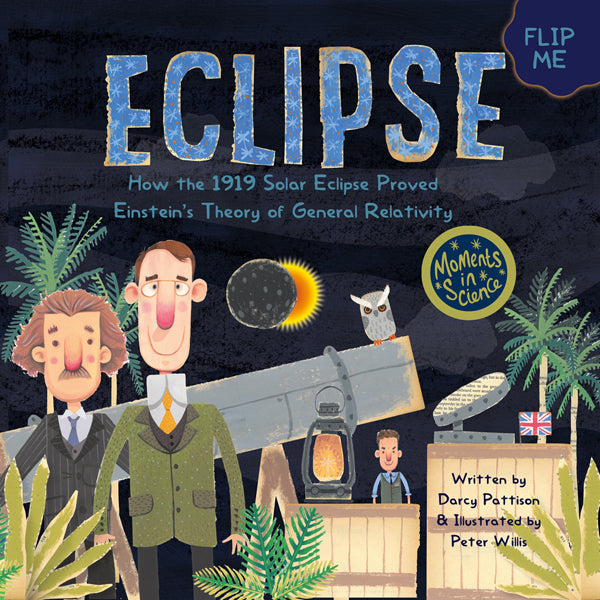
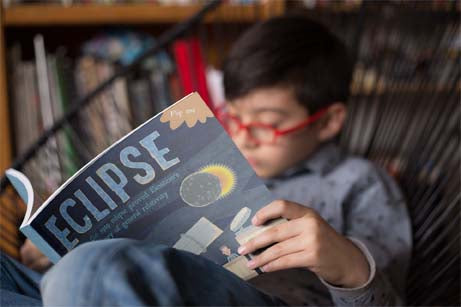
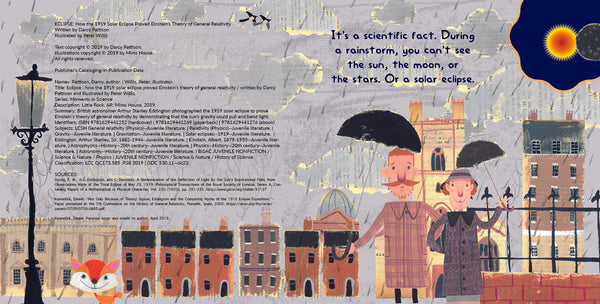
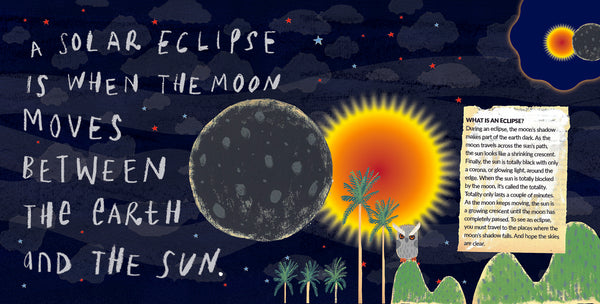
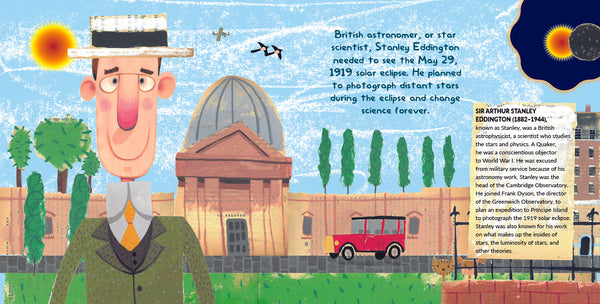
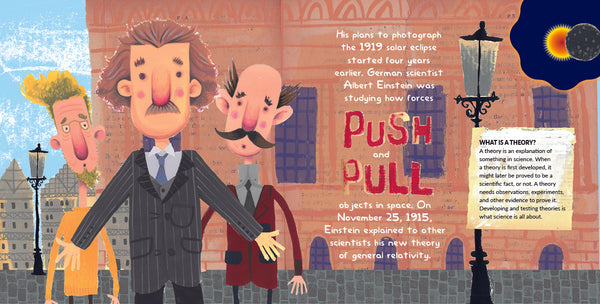
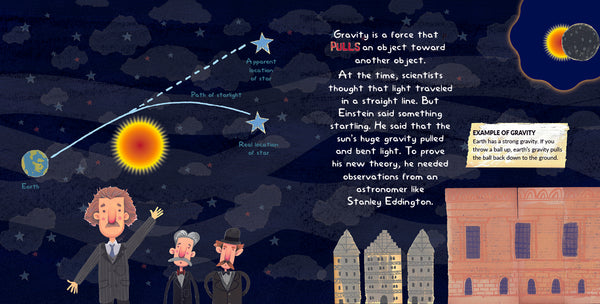
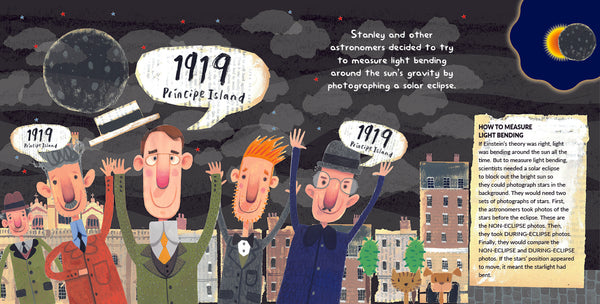
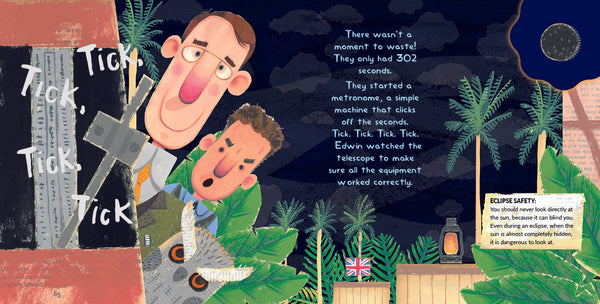
Shipping calculated at checkout
about the book
- by Darcy Pattison
- illustrated by Peter Willis
- 8.5" x 8.5"
- 32 pages
- 4th-5th grade reading level, 830L
“… Pattison takes a complicated scientific theory and makes it not just fairly understandable, but entertaining as well.” Kirkus Reviews
NOW ON THE EPIC! app and the BOOKA app.
This book uses the 1919 solar eclipse to:
- explain the basics of an eclipse (what it is, how it happens).
- help kids move past the basics to understand a ground-breaking change in scientific understanding.
- keep kids entertained and engaged!
- Do all of that with simple, understandable and readable text.
So--how do you prove an impossible idea? The 1919 solar eclipse was used to prove Einstein's theory of general relativity.
With courage, perseverance, and a lot of luck!
In 1915, British astronomer Arthur Stanley Eddington was fascinated with Einstein’s new theory of general relativity. The theory talks about how forces push and pull objects in space. Einstein said that the sun’s gravity could pull and bend light. It seemed like a crazy idea. Could his theory be proven?
"The text of the book is wonderfully clear and easy to follow, and the illustrations are great, both lively and informative. The story of the eclipse unfolds dramatically, and the science is explained vividly and correctly." Daniel John Kennefick, Astrophysicist and Science Historian
To test this, astronomers decided to photograph a solar eclipse. The eclipse would allow them to photograph the stars before and during the solar eclipse. If the star’s position moved, then it was evidence that that light had bent. Eddington and his team traveled from England to the island of Principe, just off the African coast, to photograph the eclipse.
In simple language, this nonfiction illustrated picture book explains how the push (acceleration) and pull (gravity) of space affects light.
Back matter includes information on Einstein, Eddington, and the original photograph of the 1919 solar eclipse.
DOWNLOAD A VIDEO
Choose the Short Video format for an abridged video of the book. In this shorter, slightly abridged version, the sidebars are not read. At about 6 minutes long, it's perfect for younger grades who have shorter attention spans, or older kids who will take time later to discuss the book.
Time: 6:10 minutes
Format: Mp4
Printables for Teachers
For teachers, I taught a professional development session on teaching about the solar eclipse. Download the Slide Deck
Need easy lessons? Download the printable packet for ECLIPSE!
- Solar Eclipse Model
- NASA - What is a Solar Eclipse
- NASA - Solar Eclipse Safety Activity
- Where is the Eclipse? Path of Totality Map. Skip counting by 5
- Eclipse map - Compare the 1919 and 2024 eclipses.
- Writing Worksheets - Sensory details, time line, map, essay,
- Meet the Illustrator - Peter Willis
- Solar Eclipse Flip Book pattern
- Math: Photographing Stars in 1919
- Curriculum Standards
Pattern for Eclipse Flip Book for Students to Make
MOMENTS IN SCIENCE SERIES - Read More
This eight-book series of nonfiction STEM books highlights biographies of scientists and moments when science changes in some way: a discovery, a new understanding, a new photo, or a Nobel prize award. Scientist's biographies combine with an historical event, and they are wrapped up in clear, concise, and fun explanations of scientific principles. Come and have fun reading an excellent nonfiction picture books.
This series has received a starred review, two NSTA Outstanding Science Trade Books, Junior Library Guild selection, NSSTA Notable Social Studies Book, and the Eureka! NonFiction Honor award (CA Reading Assn.). See the entire MOMENTS IN SCIENCE series here.


